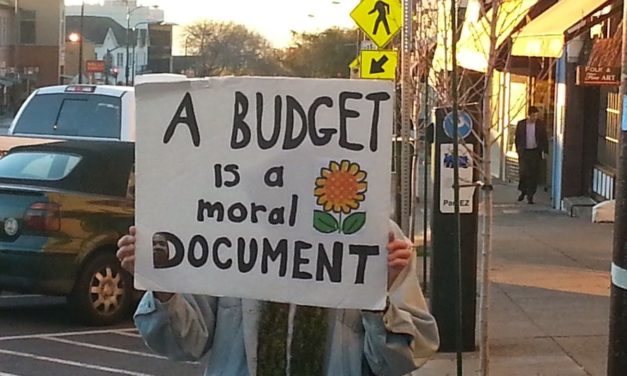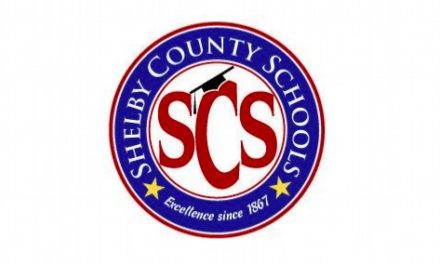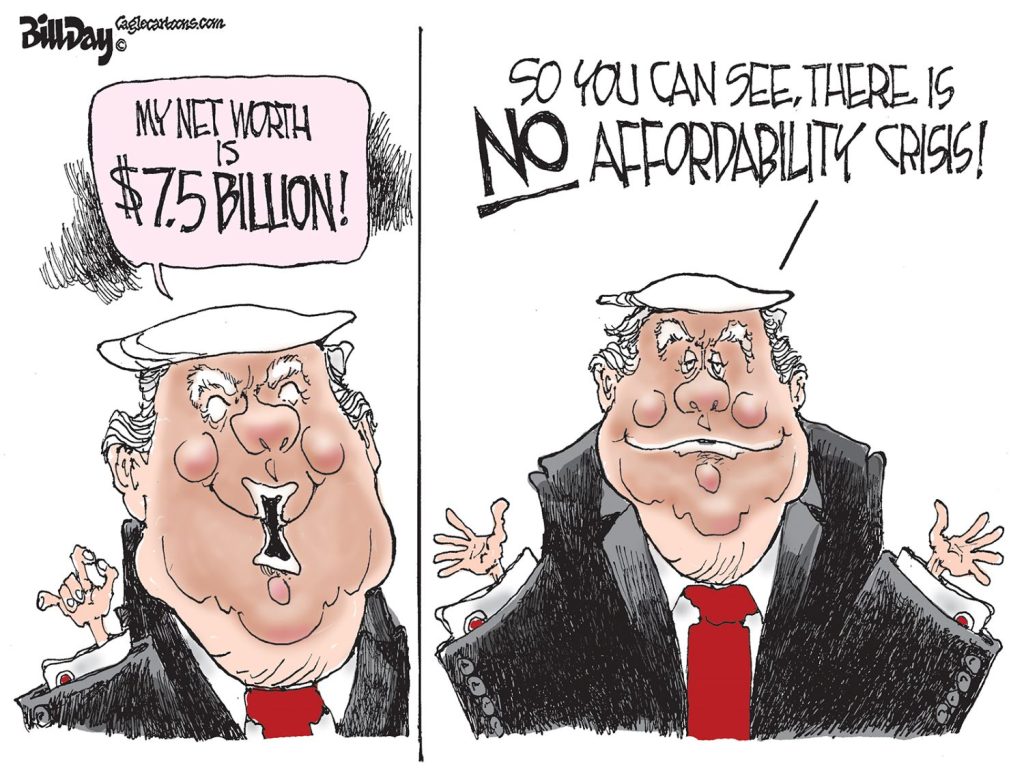By Cardell Orrin
This budget season, a quiet but significant divergence in fiscal policy has come to a head. While the majority-Republican suburbs are making bold decisions to invest, the Democratic-led city and county governments are choosing a path of austerity. It’s a political paradox that would be fascinating if it weren’t so damaging to the people who need investment the most.
The current conversation is a study in managed decline. This fiscal reality wasn’t created by the current administrations or councils, but they are squandering a critical opportunity to right the ship. The very process is guided by a state mandate that imposes a conservative approach to budgeting. This “certified tax rate” law, while sounding neutral, effectively forces local governments into a revenue-flat position that doesn’t even allow for inflation or the rising costs of providing services. It’s a formula for keeping government small and underfunded, especially in communities with the greatest needs.
A Tale of Two Tax Policies
Let’s be clear about what happened this budget season. Every suburban government in Shelby County, except for Lakeland, was presented with the same “revenue neutral” tax rate from the state. And every single one of them determined that it was not enough to properly serve their residents. They made the strategic choice to adjust their rates to secure new investments for salaries, public safety, and community projects.
Meanwhile, Memphis leaders are headed to officially adopting their certified rate of $2.58. The Shelby County Mayor, on the other hand, is proposing a rate of $2.73. The administration’s proposed rate is four cents higher than the official state-certified rate of $2.69, pitting the Mayor’s proposal against the state’s “truth-in-taxation” process.
But who really wins when we set the property tax so conservatively low? The primary beneficiaries are the owners of properties that are rapidly appreciating in value. The opportunity cost is paid by the neighborhoods in North and South Memphis that haven’t seen those value increases and desperately need the city to be a partner in their growth. It’s a trickle-down strategy that has never worked for the people of this city.
Investment Scenarios: The Road Not Taken
What if Memphis and Shelby County leaders had shown the same commitment to reinvestment as their suburban counterparts? We analyzed the rate adjustments from the five municipalities that generated new revenue and applied them to our city and county budgets.
- Focused Investment (Millington Model): A modest +7.56% adjustment.
- Community Average: A +14.86% adjustment.
- Growth Investment (Bartlett Model): A +26.45% adjustment.
Potential New Annual Revenue for the City of Memphis
(Based on a Certified Rate of $2.58 and revenue of $1.8M per penny)
| Investment Scenario | % Adj. Above Certified Rate | Hypothetical Memphis Rate | Rate Shift (in Cents) | Potential New Annual Revenue |
| Focused Investment | +7.56% | $2.775 | 19.5¢ | $35.1 Million |
| Community Average | +14.86% | $2.963 | 38.3¢ | $68.9 Million |
| Growth Investment | +26.45% | $3.262 | 68.2¢ | $122.8 Million |
Potential New Annual Revenue for Shelby County
(Based on a Certified Rate of $2.69 and revenue of $3.1M per penny)
| Investment Scenario | % Adj. Above Certified Rate | Hypothetical County Rate | Rate Shift (in Cents) | Potential New Annual Revenue |
| Focused Investment | +7.56% | $2.893 | 20.3¢ | $62.9 Million |
| Community Average | +14.86% | $3.088 | 39.8¢ | $123.4 Million |
| Growth Investment | +26.45% | $3.401 | 71.1¢ | $220.4 Million |
A Study in Messaging: Investment vs. Austerity
The divergence goes beyond the numbers; it’s a fundamental difference in how leaders communicate with their constituents.
The suburban municipalities that adjusted their rates to generate new revenue were proactive and transparent about it. Their messaging framed the decision as a necessary investment to “support essential services,” “attract and retain top employees,” and fund “capital investments.” They made a public case for why standing still was not an option in the face of rising costs and community needs. Theirs was a narrative of fiscal responsibility aimed at improving quality of life.
In sharp contrast, the messaging from Memphis and Shelby County has been centered on austerity. The conversation has been dominated by the political victory of “not raising taxes” and “holding the line.” By focusing on the nominal rate reduction mandated by the state, our city and county leaders sidestepped a more difficult, but more honest, public conversation about what is being lost by not capturing new revenue. It’s a conversation that prioritizes the appearance of fiscal conservatism over the urgent needs of the community.
The Choice: Austerity by Default or Investment by Design?
The numbers are not just abstract figures; they represent a choice between a path of imposed austerity and a community where everyone can be thriving, healthy, and whole. The FY26 Moral Budget, a framework developed by community advocates, provides a clear roadmap for what this investment could look like.
Consider this: the $68.9 million that the City of Memphis chose to forego by not adopting the “Community Average” rate would have almost perfectly funded the Moral Budget’s entire city request of $69.5 million. It would provide the $19 million needed for the Affordable Housing Trust Fund and eviction prevention, the $20 million to restore MATA service to pre-2024 levels, and the $10 million for community-based violence intervention programs.
Likewise, the County’s “Community Average” scenario would generate $123.4 million, more than double the Moral Budget’s total county request of $49.5 million. This would easily fund critical investments like $18 million for housing support and $6 million for youth mental health services.
The path to a better-funded, more supportive city and county is not a mystery. The suburban municipalities have provided a clear, data-proven strategy for generating revenue. The Moral Budget provides a clear, community-driven roadmap for investing it. The only thing missing is the political courage to make a different choice.
Appendix: Shelby County FY2026 Property Tax Rate Overview
(All rates are per $100 of assessed value)
| Municipality | Current Tax Rate (FY2025) | FY2026
Certified “Revenue Neutral” Rate |
FY2026
Legislative Body Adopted/Proposed Rate |
% Change from Certified Rate |
|---|---|---|---|---|
| Shelby County | $3.39 | $2.69 | $2.73
(Mayor Proposed) |
+1.49% |
| Memphis | $3.195 | $2.58 | $2.58 | 0.00% |
| Arlington | $1.28 | $1.0018 | $1.13 | +12.80% |
| Bartlett | $1.73 | $1.3128 | $1.66 | +26.45% |
| Collierville | $1.84 | $1.49 | $1.61 | +8.05% |
| Germantown | $1.838 | $1.4987 | $1.79 | +19.44% |
| Lakeland | $1.19 | $0.94 | $0.94 | 0.00% |
| Millington | $1.40 | $1.1157 | $1.20 | +7.56% |
Cardell Orrin is Tennessee executive director for Stand for Children, a nonprofit organization that works with parents, educators, and community leaders to advocate for education policies focused on ensuring students graduate from high school prepared for, and with access to, a college education or career training. He is actively involved in a number of Memphis and an advocate for progressive and smart public policy.






